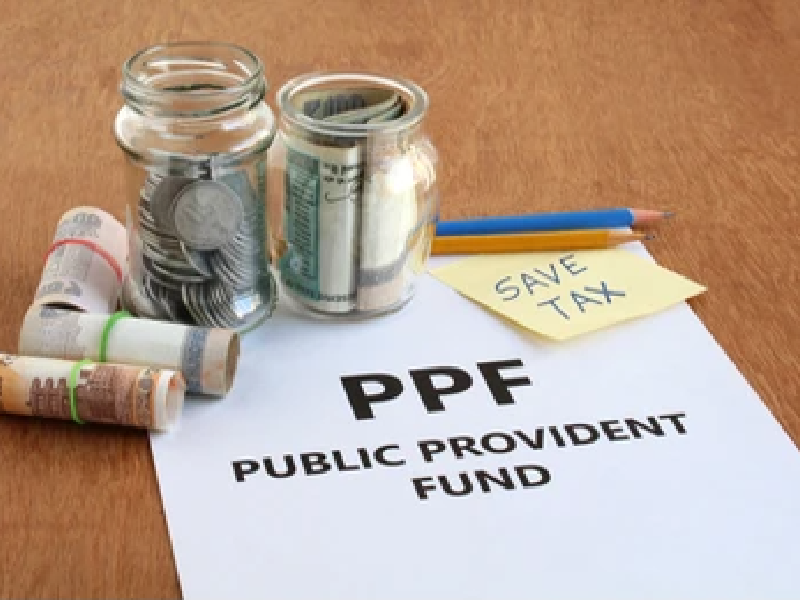
Provident Fund is a corpus that is accumulated during the working years toward retirement. It comes under the ‘EEE’ or ‘exempt exempt exempt’ investment category. This means an investor can avail of tax exemption on such investments, for both the investment, interest earnings, and the maturity amount. However, this exemption is applicable only if a PF account holder remains invested in it for a minimum of five years.
In case of PF withdrawal before the completion of five years of the PF account, the amount is subject to income tax and TDS deduction.
What is Form 15G?
Form 15G is a form that is submitted to banks/other financial institutions when you don’t fall under the taxable category of income. As per tax saving tips from investment experts, individuals whose annual income falls within the non-taxable limit of Rs. 2.5 lakhs can save TDS deduction on PF withdrawal by furnishing form 15g/15h.
Form 15G for PF withdrawals
Apart from using Form 15G for FDs, it can now also be used for PF. EPFO Unified portal launched this facility, allowing all EPF members to withdraw PF online while avoiding TDS.
Is Form 15G mandatory for PF withdrawal?
Form 15G is mandatory for taxpayers to avoid TDS on the amount withdrawn. According to the provisions of section 192A, PF withdrawal over Rs, 50,000 before the completion of 5 years of employment will attract a levy of TDS.
TDS will not be deducted in case of PF withdrawal after the completion of 5 years of employment. Furthermore, TDS at the rate of 10% will be applicable if the member does not provide a valid PAN Card.
How to download Form 15G for EPF withdrawal?
PF account holders can submit Form 15G along with their PF withdrawal forms to ensure the non-deduction of TDS upon withdrawal.
- This form can be downloaded online through multiple options like
- Website of all the major banks in India
- EPFO website
- Website of Income Tax Department
- If opting for physical submission, one can fill out the form and submit a physical copy to the EPFO regional office.
Can we submit Form 15G online for PF withdrawal?
Here are the steps to be followed for downloading and submitting Form 15G online using the EPFO portal:
- Users must log in to EPFO UAN unified portal through their username and password along with the captcha code provided.
- Visit the online services section.
- Go to ‘Claim (Form-31, 19, 10C & 10D)’ available in the drop-down menu.
- After filling in all the required details, one must verify the last 4 digits of their phone number for the EPF withdrawal form to be visible.
- Download Form 15G through this section.
- The user must fill out Part 1 of Form 15G and verify all the details.
- Convert the filled form into PDF.
- Upload the PDF format of the form to complete the process.
How to fill Form 15G for PF withdrawal?
Here are the detailed steps that one must follow while filling out Form 15G:
There are two main sections in the form, the first section is meant for individuals who want no TDS on certain income segments. Listed below are the sections of the form that have to be filled:
- Field 1 – Name of the Assessee (Declarant)
- Enter name as per PAN card
- Field 2 – PAN of the Assessee
- A valid PAN card in the assessee’s name is essential to be eligible to file Form 15G.
- In absence of a valid PAN, an assessee’s declaration is considered invalid.
- Only an individual assessee can claim Declaration in Form 15G and it is not permitted for firms or companies.
- Field 3 – Status
- An individual’s income tax status should be an individual or Hindu Undivided Family(HUF).
- Field 4 – Previous Year
- The financial year for which one is claiming the non-deduction of TDS must be the previous year.
- Field 5 – Residential Status:
- Residential status should be a resident individual.
- NRIs cannot submit Form 15G.
- Fields 6-12 – Address:
- Enter the communication address along with the PIN code of the address.
- Fields 13-14 – Email id and contact details:
- Enter a valid email ID and contact number for future communications.
- Field 15 (a) – Assessed to tax under the Income-tax Act, 1961:
- Select ‘’Yes’’ if tax was assessed in any of the previous financial years as per provisions of the Income Tax Act, 1961.
- If selecting ‘yes’, state the latest assessment year for income tax returns.
- Field 16 – State the estimated income for which this declaration is made
- Field 17 – State the estimated total income of the previous financial year
- Field 18 – Details of Form 15G filed during the previous year, if any:
- Those who have filed Form 15G anytime during the financial year should state the details of the same along with the aggregate income amount
- Field 19 – Income details for which the declaration is filed:
- Here, one must fill in the investment details for which the declaration is being filed. It is important to mention the investment account number (term deposit reference/ life insurance policy number/ employee code, etc.)
Before submitting, make sure to re-check all the information to avoid any errors.
Is Form 15G mandatory for PF withdrawal of less than Rs. 50,000?
Form 15G is the benefit that is provided to individuals to avoid the levy of TDS on the PF withdrawal amount. However, for any withdrawal amount that is less than Rs. 50,000, members do not need to submit Form 15G.
How much amount of PF interest is tax-free?
As per the amendment in the Finance Act 2021, interest earned on PF is taxable as per the provisions of the Income Tax Act, 1961. According to these provisions, the interest income of PF up to Rs. 2,50,000 in a financial year is tax-free for a non-government employee (where the employer also contributes to the EPF account) and Rs. 5,00,000 for a government employee.
Conclusion
Form 15G helps PF account holders to avoid TDS, if applicable. It is important for claimants to note that any false declaration of Form 15G may result in a fine and also imprisonment as per Section 277 of the Income Tax Act, 1961. Therefore, one must ensure to mention the correct details while filling out the form for tax-saving purposes.
FAQs
You must submit Form 15G at the bank branch from which you receive the interest income. You don’t need to submit the form at the Income tax department as it is required to be submitted with the income tax or TDS deductor
Since Employees’ Provident Fund (EPF) is a mandatory deduction from the salaries of employees employed with eligible organisations, there is no alternative to the same. Both employee and employer have to contribute towards the employee’s PF account.
The interest rate applicable to EPF contributions is 8.5%.
Both Public provident fund and Employee provident fund are government schemes that are designed to act as tax-saving options. Both are covered under Section 80C of the Income Tax Act, 1961. While EPF is mandatory for eligible employees, PPF is a voluntary scheme that can be opted based on individual investment preferences.
If an employee wants to modify his/her contribution in EPF to a higher amount than the minimum requirement, then he/she can do so. However, the excess contribution comes under ‘Voluntary Provident Fund’ and the employer’s contribution remains unchanged.



























